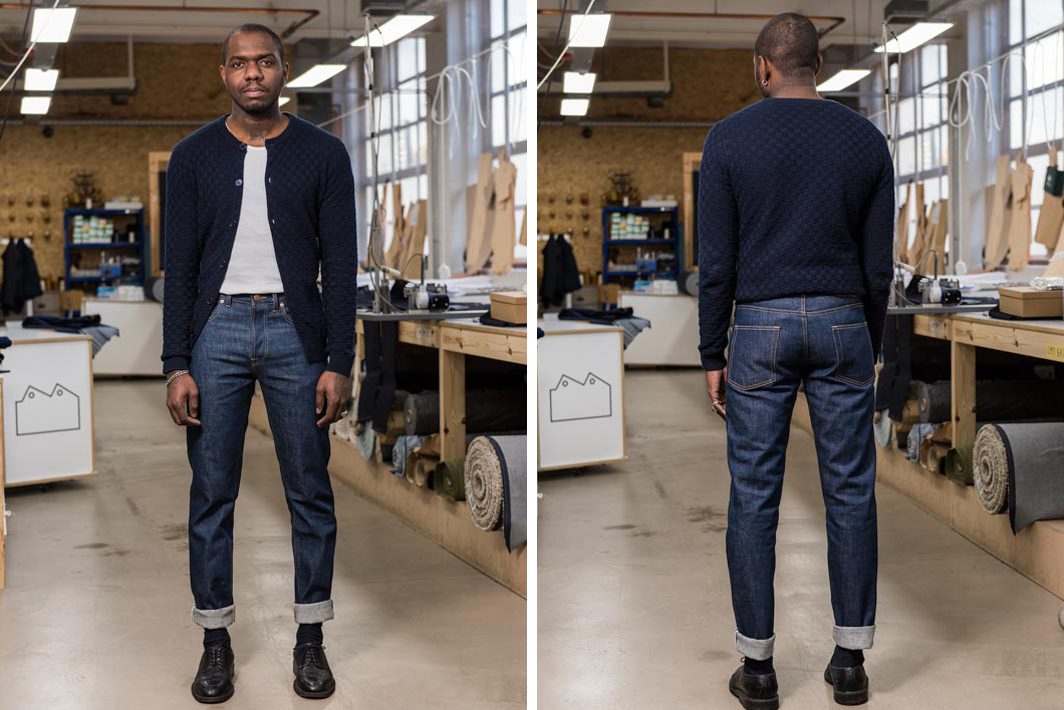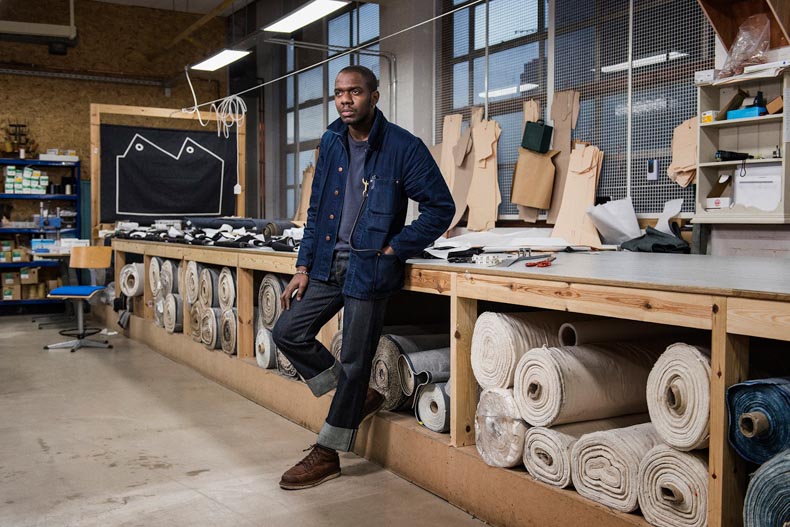PART 2: What do Michelin-starred chefs, third wave coffee culture and burger joints have to do with denim?
RD: And the first products you started with?
David: When we initially launched the brand, we launched with three styles. It is increasing quickly with the lifestyle range and another fit. But at the beginning, we had three.
All our fits are based on us imagining what someone would wear in a particular London postcode. And incorporating that into the jean design.
Maybe the most “popular” would be the E5 fit. It is a relaxed tapered fit, medium rise and relaxed in the thigh area. Perfect for cyclists and weightlifters and then a taper down to the bottom. It has a bit more “modern” styling to it, nothing too heritage, except of course the construction details.
The next was the NW3. This is more of our Heritage fit. So what a jean might be like in the 1940s. So higher rise, very tailored in the top block but then a relatively straight leg from there. And since it is our heritage fit, we have incorporated arcuates on the back. We designed the arcuates to match the silhouette of our factory building. This jean is really popular in the Japanese market because of its heritage styling.
The third fit we launched with is the N16 fit. This is a modern trouser/jean hybrid. Lower rise, pretty slim cut but then a slash trouser pocket and a hidden coin pocket. So it’s for the guys who like the chinos, but want the jean they can dress up a bit.
Recently we brought to market our E8 fit, this is our super slim. It is inspired by the E5 but more of a slim cut, not quite a skinny jean, but still very slim.
With all the jeans, we have a spectrum of the denim we offer them in. If a denimhead walks in and says, we want the most premium Japanese denim you have. We do our E8 in the 14 oz denim from Kurabo Mills. They have developed a black line selvedge for Blackhorse Lane, that we use in a double black and an indigo/white weft jean.
In the other three, we wanted to offer something a bit different. We are working with some European mills. One that does selvedge and one that does an organic denim. These denim are as good as the Japanese denim, but with a significantly smaller carbon footprint and a great price to quality price ratio for the buyer.
So if someone comes in who is a little cost conscious or environmentally conscious, we have the denim for them.
RD: Let’s get into the details of the jeans…
… When you say quality, do you mean innovation or getting back to the Heritage methods of manufacture?
Han: For us, when we were setting up this Atelier as a denim Atelier, we knew that denim was the most competitive market in the world. You can get a pair of jeans for 20 Euro a pair or a denim for 800 Euro a pair.
When we looked at the best jeans out there, we realised that they were not American, they were Japanese. We looked at the construction and wanted to understand why they were better than Americans.
We saw that their jeans are better because they follow heritage style finishing. They line the back pockets, they include the hidden rivets. The waistband is done in the way it was done for 120 years. It is the slow techniques but they were the strongest. We realised that if we were going to do this, we had to set our competitor as the Japanese makers rather than the European or American makers. The idea is to make better garments than the Japanese.
If we take denim, it has traditionally been workman’s garments. And people took shortcuts in the manufacture. If you look at the inside you have lots of over-lock stitches. Most denim is finished using over-lock stitching. In tailoring, when you finish something, you usually hide the stitching either using a French seam or you do a binding. If you look at our garments inside, you don’t see one single overlock stitch.
David: The fly also, it is not taped or over-locked, It uses a combination of folding and stitching. We did our homework and found out that in 1877, there was a patent for making jeans fly out of a single piece of denim. We have improved it a little, in the original, you had to snip the denim and do a little extra stitching. But we have made it simpler and stronger. Pushing the quality bar that much higher and it yields this nice aesthetic quality to the jean too.
When people flip our garments inside out, they are really surprised in a couple of ways, one is the totally clean production. The other is we can say we are totally made in London! At the moment no one else can say that. The last jeans maker was about 50 years ago. Furthermore, we also put all the information about what mill the denim comes from, We want people to know what goes into their jeans. Lastly, our pocket bags are silk screened by our neighbours and the machinist’s hand writes the style and the size so you know that each jean was made by hand and reviewed by hand. It is a really personal touch.
I’m convinced!
Han, David and the rest of the artisans honing their craft under the Blackhorse Lane Ateliers’ roof certainly sound like they are on to something. It takes a simple spark to ignite a community’s imagination and invest holistically, foster synergies and create something truly sustainable. This could quite easily be that spark.
Blackhorse Lane is off to a good start and is set to release another wave of products which will round out the collection nicely. Rope Dye will, of course, bring you the news of their releases as and when they happen. Stay tuned and in the mean time, head over to their website to have a good look over their collection, read about the team and see the sapce.






